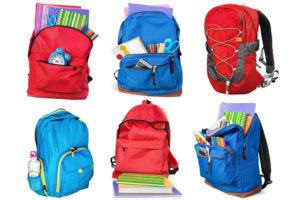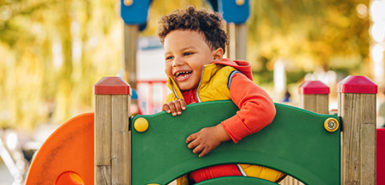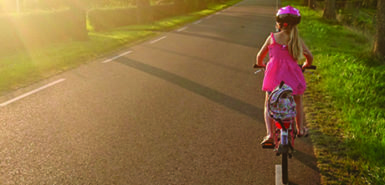
It’s school backpack shopping time, and for kids that means checking out the cool new colors and designs with their favorite TV and movie characters, sports teams or brands.
But for parents, there’s far more to consider in picking out the perfect pack.
Books. Binders. Lunch. Snack. Water bottle. Gym shoes. Laptop. Even musical instruments. When you pile it all in—and add in the stray pens, long lost papers and random “treasures” collecting at the bottom—it’s easy to see how a child’s backpack can become a hefty safety hazard.
Jennifer Hoekstra, a former injury prevention program coordinator at Spectrum Health Helen DeVos Children’s Hospital, shares her knowledge.
Backpack is best, but wear it right
A backpack is the best option for children and teens to carry all they need for a school day (rather than shoulder slings or messenger bags), because it allows them to distribute the weight across the strongest muscles of the body—the back and abdomen.
But, Hoekstra urged, they should wear it right, using both shoulder straps, rather than slinging it over one shoulder.
“It’s so much safer to carry the backpack with the weight distributed over the whole back,” she said.
If there’s just too much stuff to fit in the backpack, carry overflow (like musical instruments and sporting equipment) in a separate bag. Kids tend to carry things on their dominant side, but it’s important to switch from side to side to keep their spine in proper alignment and prevent “gravitational pull,” she said. One day carry it in the right hand, the next day, use the left hand.
Shopping tips
Hoekstra said parents should look for these things in a safe backpack—as recommended by the American Academy of Pediatrics:
- a lightweight pack that doesn’t add a lot of weight from the pack itself (for example, leather packs can be much heavier than canvas)
- two wide, padded shoulder straps; straps that are too narrow can dig into shoulders and cut off circulation
- a padded back, for comfort and protection from being poked by sharp edges on objects (pencils, rulers, notebooks) inside.
- a waist belt, which helps distribute the weight more evenly across the body using hip bones. (Hoekstra said parents should encourage their kids to wear the waist belt at all times. “It really is a good idea if you can teach kids from the beginning that this is an expectation,” she said.)
- multiple compartments, which can help distribute the weight more evenly, rather than having just an open backpack where everything falls to the bottom.
Lessening the weight
According to doctors and physical therapists, kids should carry no more than 10 to 15 percent of their body weight in a backpack. Books and supplies can add up in a hurry, so Hoekstra suggests emptying the backpack each night to clear out any extras that have accumulated.
Many backpack manufacturers offer age and height recommendations for their products. This can be helpful in picking a backpack that’s the right fit for your child, but still be mindful of how much kids are piling inside.
Kids carrying big backpacks often aren’t aware of how much space they’re taking up. Show kids in a mirror what their loaded backpack looks like on their back, so they can take care not to knock over other kids on the bus or in the hallway, Hoekstra said.
Safety first
Do not have your child’s name printed or monogrammed on the outside of the backpack.
“Strangers may use that to call a child by name,” she said. “We, as creatures of habit, are very comfortable when someone knows our name, so people with bad intentions are going to use that to their advantage.”
Instead, find a place inside the backpack to label it. If you want to use the monogramming option offered by some manufacturers, use initials instead, she said.
Children walking to school or waiting at a bus stop should also have something reflective on their backpack, making them as visible as possible to passing motorists, Hoekstra said.
 /a>
/a>
 /a>
/a>
 /a>
/a>